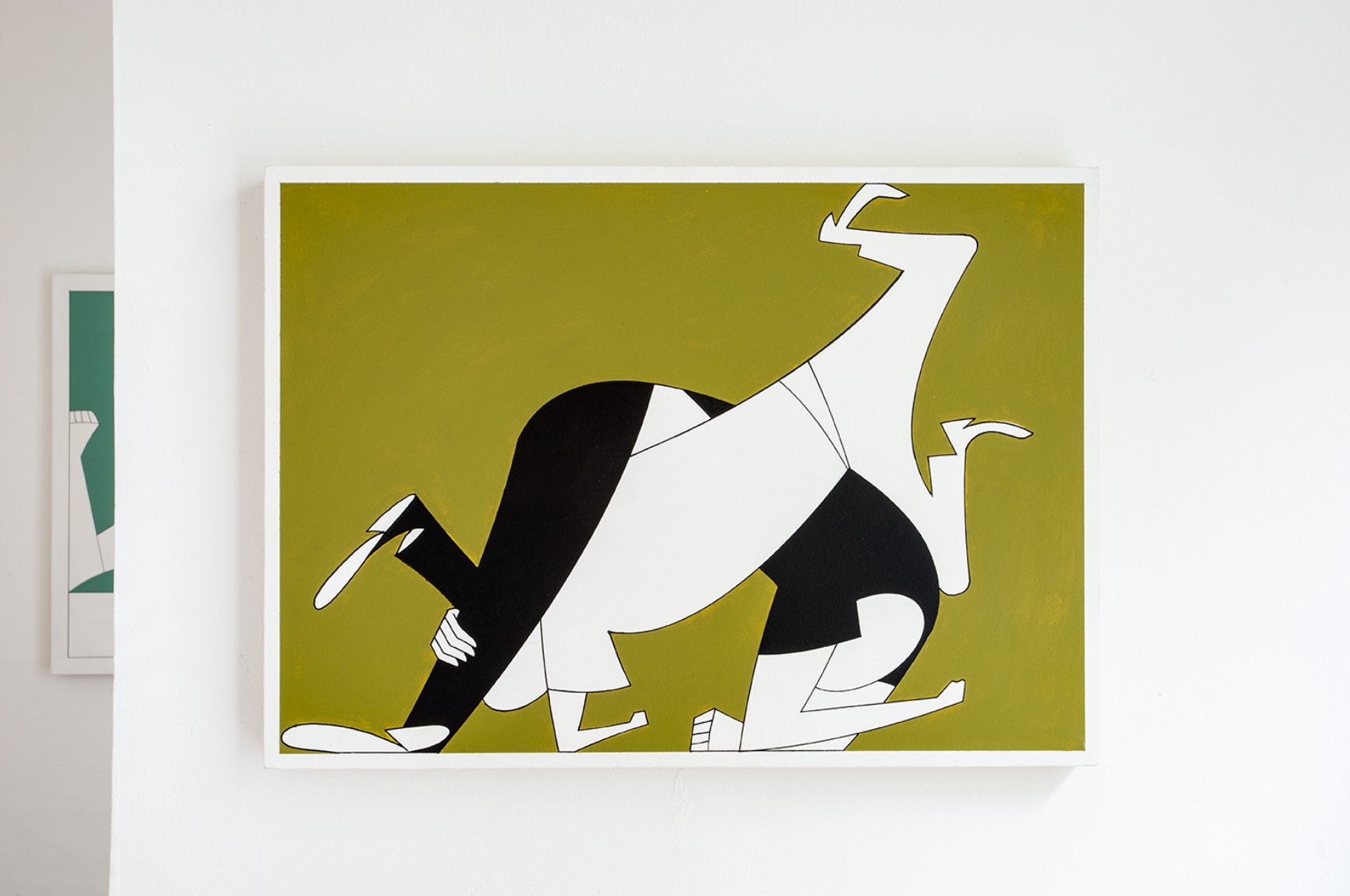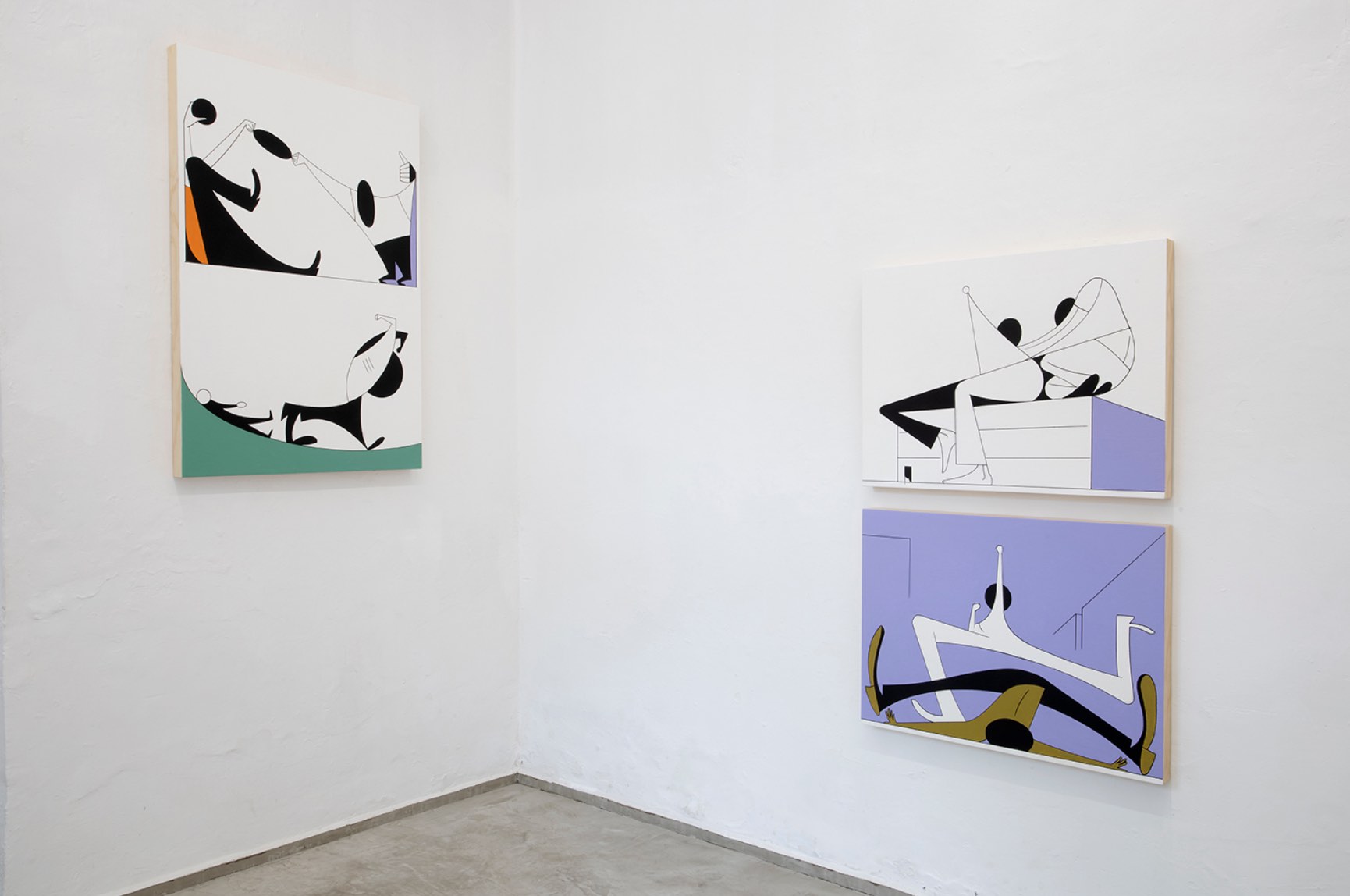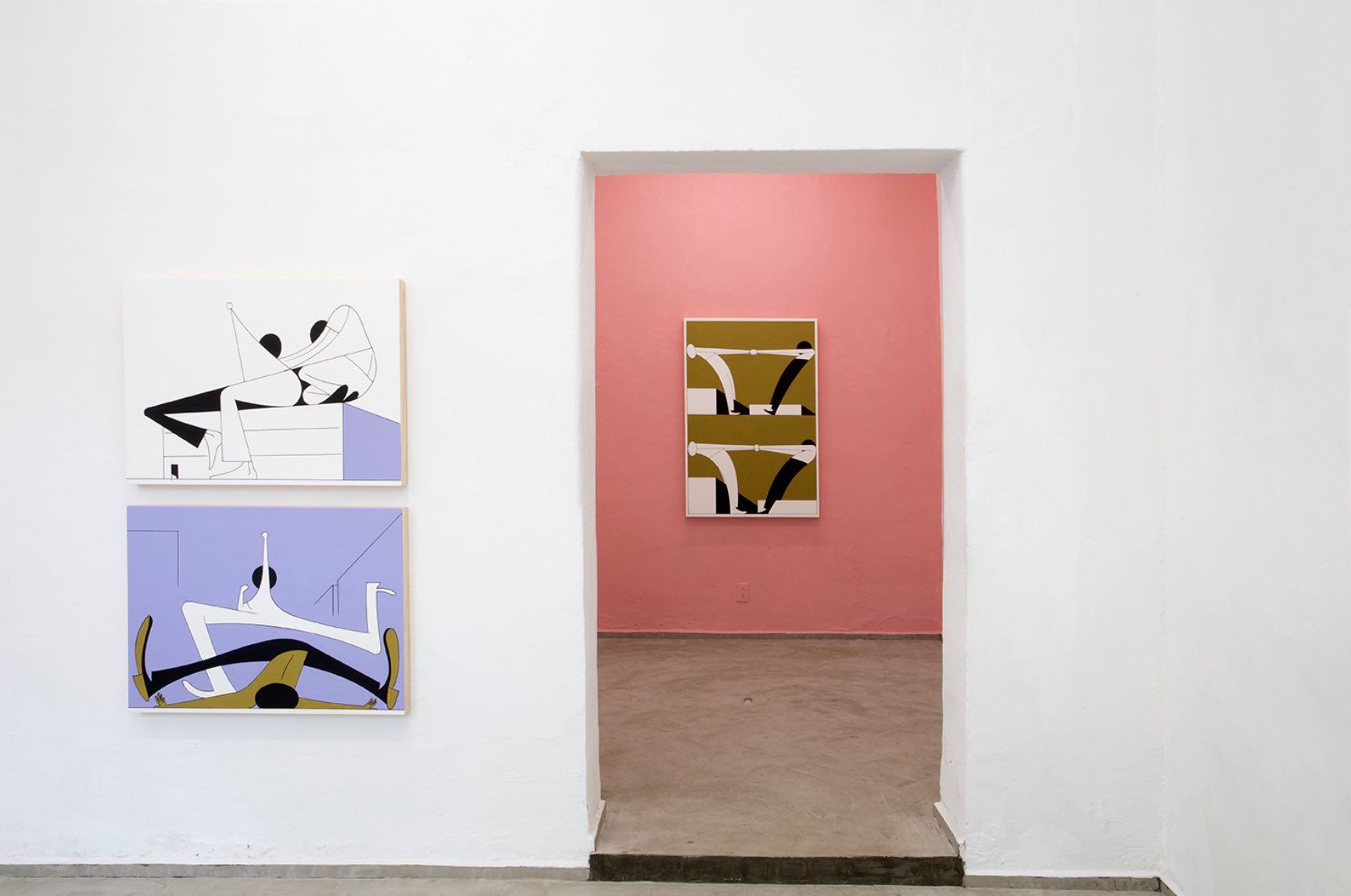
Review
Primaria trunca: Jonathan Miralda Fuksman at guadalajara90210
by Eric Valencia
Reading time
5 min
I wrote a direct message to Jonathan Miralda Fuksman in order to schedule an appointment and visit his most recent exhibition, Primaria trunca [Truncated Elementary] which is being presented at guadalajara90210. I proposed that we see each other at 9 AM but he told me this was very early, that he had insomnia, and that he preferred a time closer to noon. We moved the appointment back a couple hours: “We’ll try,” we agreed. Miralda Fuksman, Sandra Sánchez, and I met at the door of the exhibition—punctually 15 minutes late.
![Jonathan Miralda Fuksman, Escalera [Stairs]. Courtesy of guadalajara90210 and the artist. Photo by Rubén Garay.](https://firebasestorage.googleapis.com/v0/b/prod-ondamx-art.appspot.com/o/media%2F1629362766701-2.jpg?alt=media&token=f8029bd3-daee-4f96-bd44-9c5a170ed230)
During the guided tour, he told us about about the idea of rolling back one’s eyes in order to experience one’s body in a different way. The exposed whites of the eyes are for those watching us do it, while we are looking inside our body—seeing what? The eye sockets? The ideas? It’s almost like closing your eyes but a little more gymnastic. Bring your gaze inward: a body folding in on itself. I imagine insomnia as the reverse movement, as an involuntary outward unfolding, towards the night, with dilated eyes.

The idea of a fold resounded throughout the conversation. The anthropomorphic figures in Miralda’s work share interlocking surfaces, as if the conflict among them unites them rather than separates them. “Like an origami,” Sandra says. This series has the novelty of primer-less canvas edges, which reinforce the idea of the picture’s surface, of the surface as something to be folded. Miralda shared with us some reflections on his first solo exhibition, titled Cajas, in El Clauselito, a room in the Museo de la Ciudad de México [Museum of Mexico City]. The exhibition consisted of an installation made with cardboard boxes whose tops were replaced by pieces of colored, crumpled Chinese paper, which were almost always concave. The Chinese paper’s wrinkles, its malleability, as well as its intense colors, conjured up a kind of interim dimension: between the plane of the cardboard top that it replaced and the three-dimensional bottom of the cube that it concealed. This resource reverberates in the intense colors that cover certain areas of the paintings in Primaria trunca, which function like a non-figurative hollowing-out of the plane, a curvature or a purely pictorial “wrinkle.”
![Jonathan Miralda Fuksman, Basura [Trash]. Courtesy of guadalajara90210 and the artist. Photo by Rubén Garay.](https://firebasestorage.googleapis.com/v0/b/prod-ondamx-art.appspot.com/o/media%2F1629362858224-6.jpg?alt=media&token=98986429-4f91-42f6-9c34-edbcbd42c61d)
Miralda’s artistic process is largely based in drawing. Sometimes he works for days on the same paper, drawing and erasing, using rulers, squares, erasing even more, and then redrawing the same work. He calls these drawings “molds” and he calls their transfer to the canvas “casting.” We mentioned to him that we were struck by his use of technical terms that are more typical of work in sculpture, to which he replied that his artistic training was indeed largely in this discipline. He recalled his visits, as a child, to the studio of his father, the sculptor Enrique Miralda, who provided him with materials for creating. He also told us about a certain resistance he has encountered in beginning a drawing: the “fear of the blank page,” and how he has learned to overcome it by imagining that it is he who is entering the empty space—perhaps like entering a box? Hence the prominence of shoes in many of his works; their function is similar to that of the metaphor of the rolled-back eyes, which he uses in order to draw, to imagine the body in impossible contortions, to have it enter the page more as a sensation than as an image. This is why, as he points out, his characters do not have faces, since they have no way of looking at their images while looking at themselves from within.
![Jonathan Miralda Fuksman, Composición (circo) [Composition (circus)]. Courtesy of guadalajara90210 and the artist. Photo by Rubén Garay](https://firebasestorage.googleapis.com/v0/b/prod-ondamx-art.appspot.com/o/media%2F1629362717259-1.jpg?alt=media&token=24adbe9a-0a9a-43e2-bcb4-734100db5309)
Since his work process is linked to an intimate knowledge of his own body, I asked him about his relationship with dance and theater. He said that as a child he wanted to be a dancer; he was very impressed by contemporary works that he saw on TV, in particular those of Rudolf Nureyev. He later discovered Charles Chaplin and Buster Keaton. He was fascinated by the way these actors used their bodies in situations that were more ordinary, that were less abstract than those in dance. Hence also his predilection for constructing situations in which the boundary between the comic and the tragic is intertwined: the moment of the encounter in which the forces act with greater power and the outcome is unpredictable. “Encounters outside the canvas,” as he calls these tensions, which are distinct from the dispositions of posing bodies.

As I passed to the second room I was surprised by a wall that had been painted pink. I came to wonder if this was not a trick played by Primaria trunca in order to have us enter involuntarily into one of the paintings, to make us notice that every encounter is a knot, an origami of exchanges with its wrinkles and folds, with its imprecise hours and its negotiations.
Primaria trunca can be visited by appointment until September 4 at guadalajara90210, at Calle Constitución 42, Colonia Escandón.
Translated to English by Byron Davies.
Published on August 19 2021